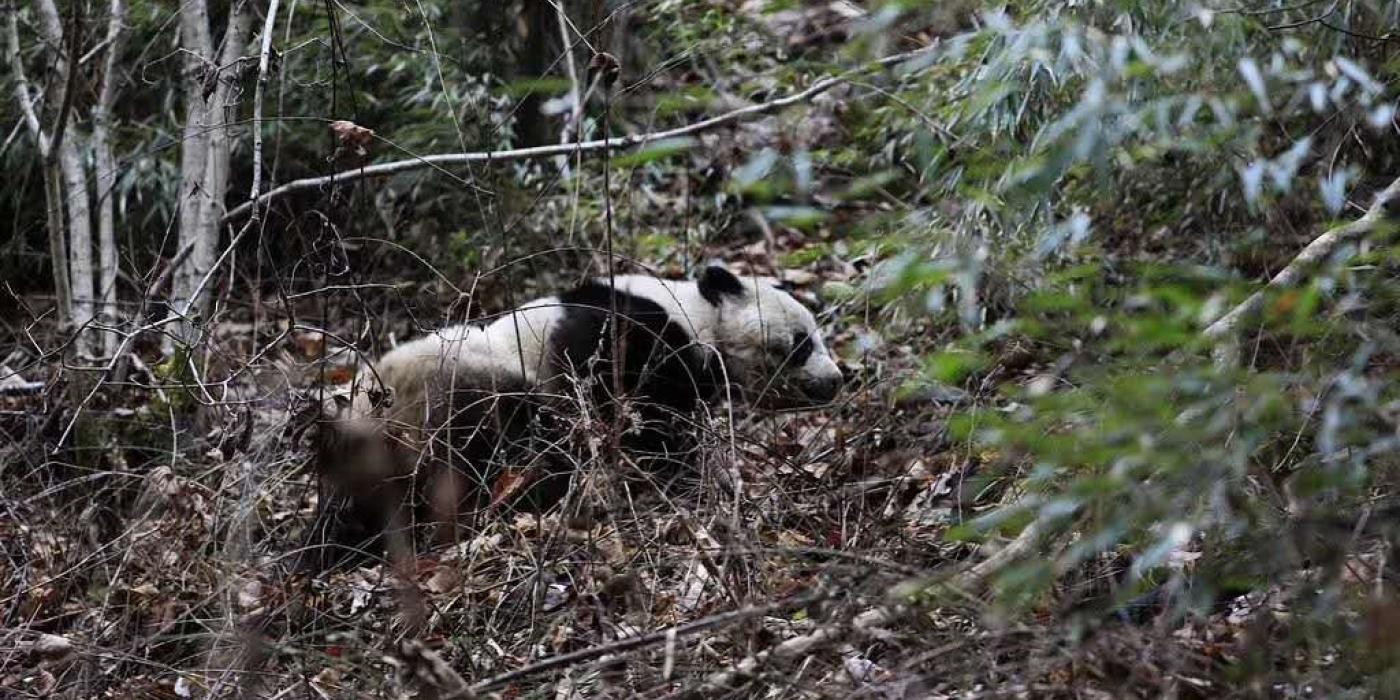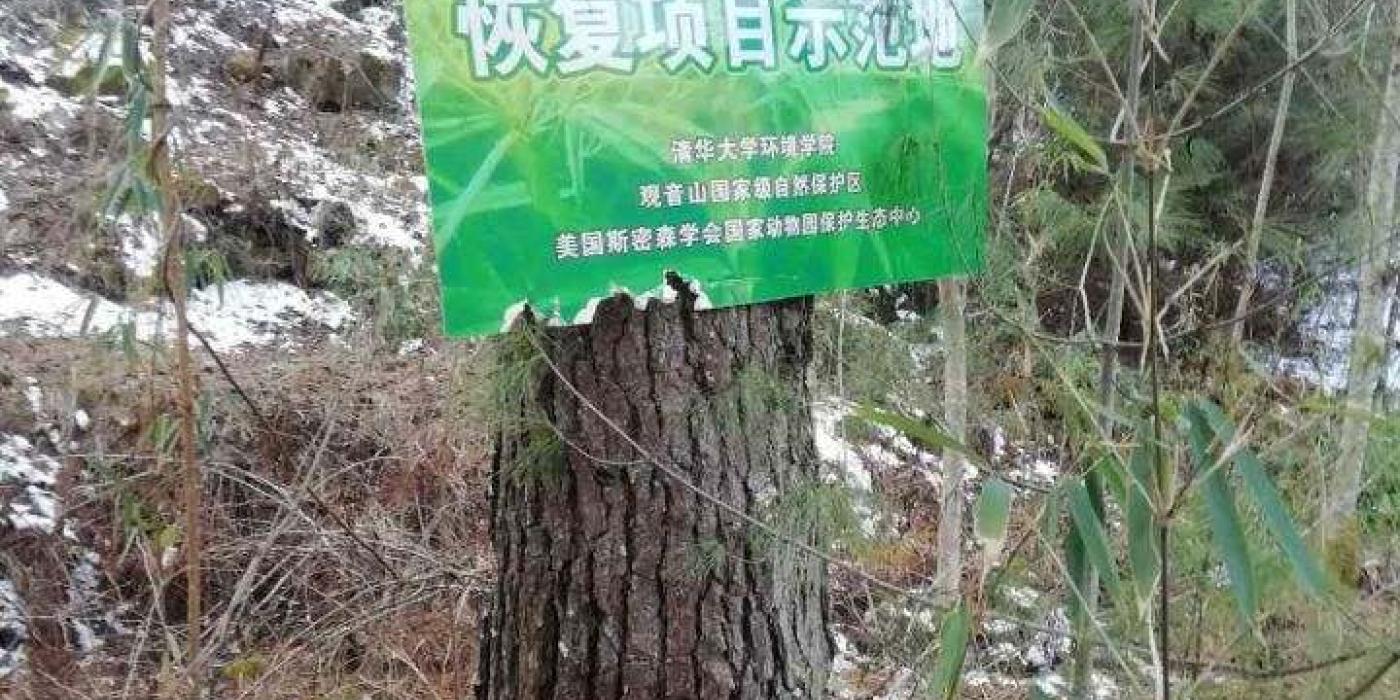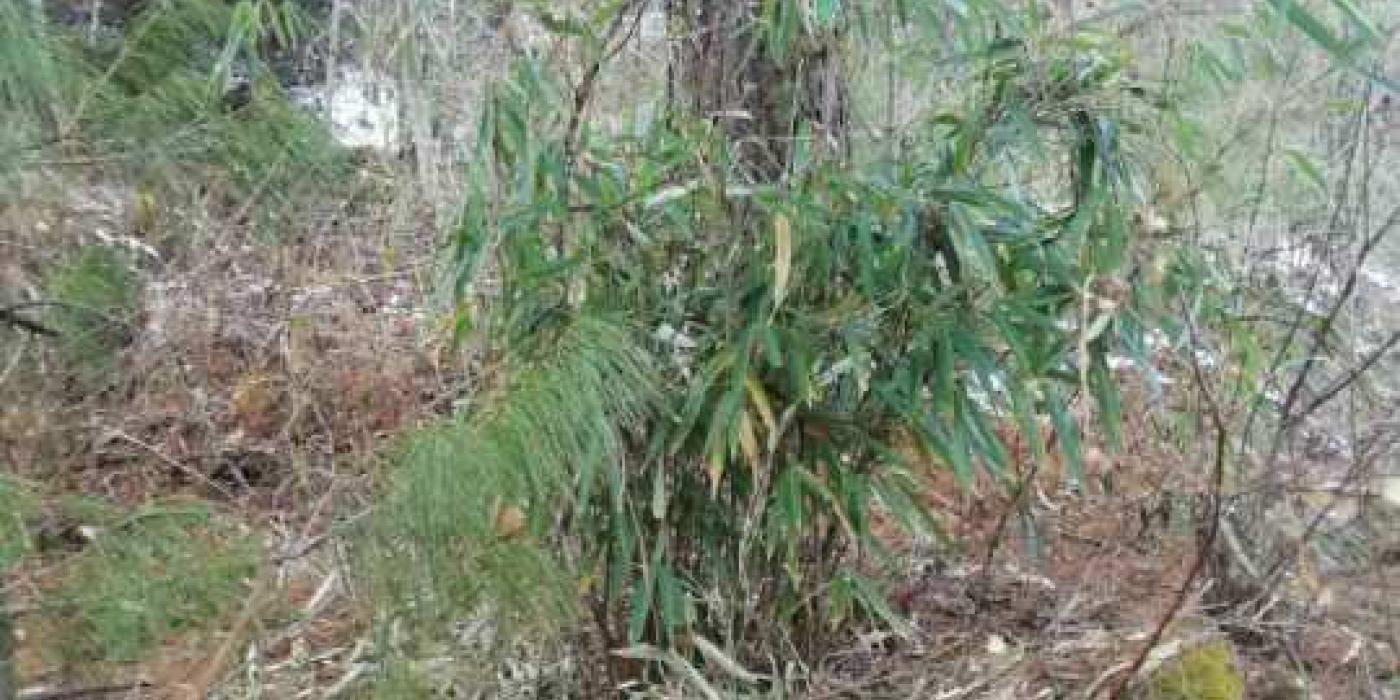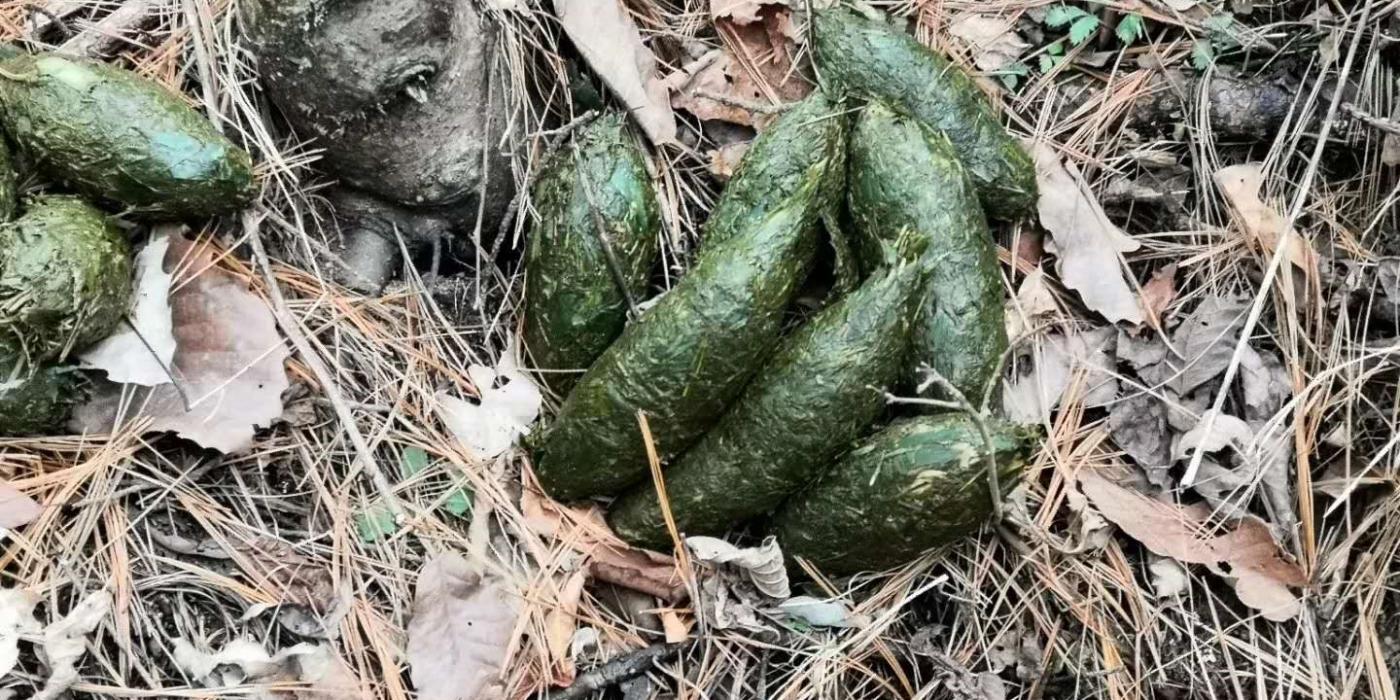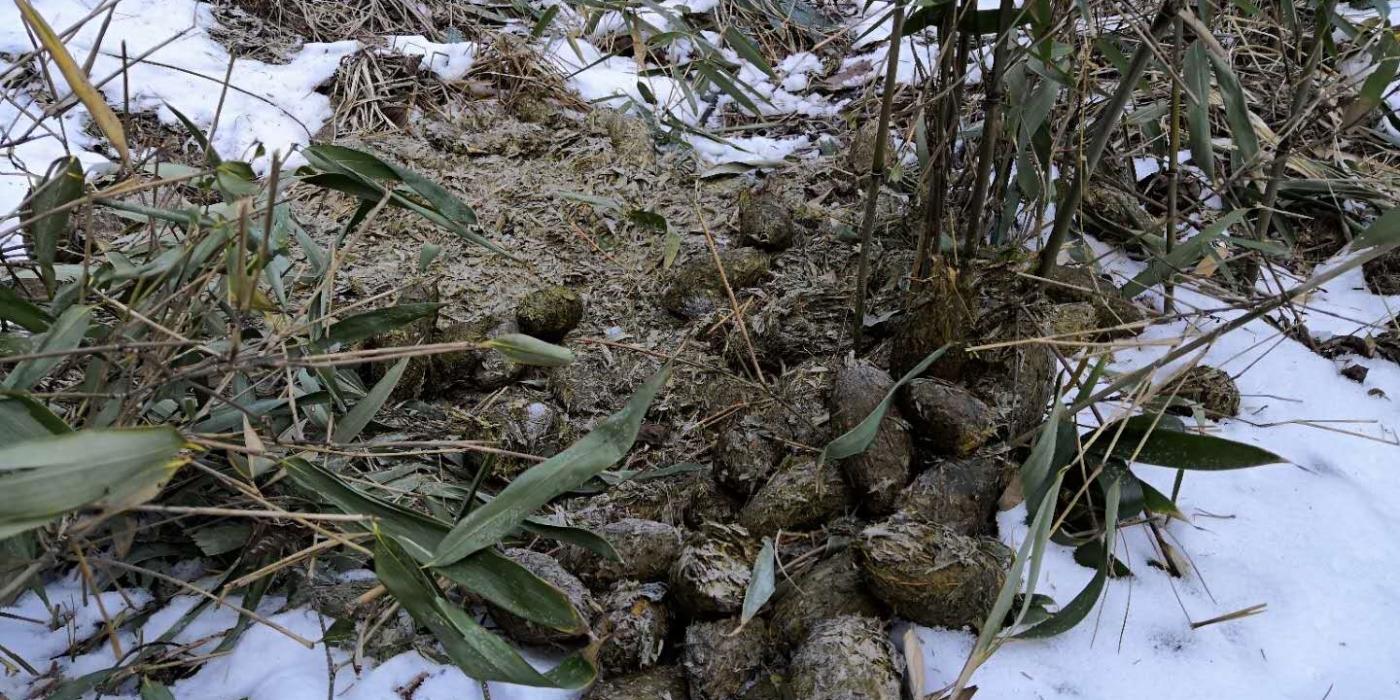Giant Panda Activity Discovered in Bamboo Restoration Plots
If you plant it, they will come.
A collaborative research team including scientists from the Smithsonian Conservation Biology Institute (SCBI), Guanyinshan Nature Reserve and Tsinghua University has established four bamboo restoration plots with the ambitious goal of accelerating the return of pandas to the area. This week, researchers discovered a fiber-rich fecal gift from a giant panda—perfect evidence for scientists!
The Guanyinshan Nature Reserve was heavily logged and impacted by development from the 1950s until 2001 before it was established as a protected area in 2002 by the Chinese government. The Guanyinshan Nature Reserve is adjacent to the Foping Nature Reserve, which is home to a thriving panda population. Despite this proximity, pandas rarely ventured into the Guanyinshan Nature Reserve. Now, signs of feeding and panda fecal matter around the plot indicate that bamboo restoration efforts have helped bring back pandas and inspired scientists to continue their research.
SCBI and Tsinghua University scientists strategically selected the four bamboo restoration plots to connect fragmented panda habitat. The existing available habitat for giant pandas is highly fragmented due to urban development and deforestation, which makes it difficult for pandas to travel to find food and mates. By identifying key sites for connectivity and creating bamboo restoration plots, scientists are optimistic that they can create corridors of forest to link habitats with isolated populations of pandas. The discovery of panda feces in the Guanyinshan Nature Reserve restoration plot indicates that the corridors are likely effective means of linking habitats and supporting panda conservation efforts. The next step will be to survey how many pandas are living in the entire area.
Restoration projects like those conducted in the Guanyinshan Nature Reserve are one of the many collaborative partnerships SCBI has to conduct science-based research and trainings worldwide.
Related Species:

